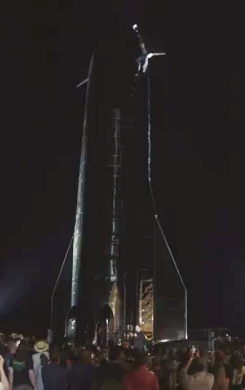SpaceX wins launch contract for NASA privately-built lunar lander
Intuitive Machines, one of the three companies awarded NASA contracts to build unmanned lunar landers, has awarded SpaceX the launch contract for its planned 2021 mission.
The Houston-based company’s first robotic Nova-C lander will carry up to 220 pounds, or 100 kilograms, of payloads to the moon’s surface. Launch and landing are scheduled for July 2021, according to Trent Martin, vice president of aerospace systems at Intuitive Machines.
Intuitive Machines previously stated plans to launch the first Nova-C mission on a SpaceX rocket, but Martin said in an interview Wednesday that the company held a “fully open competition” among multiple launch service providers before signing a contract for a Falcon 9 launch.
In a statement, Intuitive Machines said it “ultimately selected SpaceX for its proven record of reliability and outstanding value.” The company said the Nova-C mission will take off from pad 39A at NASA’s Kennedy Space Center in Florida. [emphasis mine]
That “outstanding value” almost certainly was the lowest price by far offered by any rocket company, a reality that continues to bring SpaceX business while taking market share from everyone else.
Intuitive Machines, one of the three companies awarded NASA contracts to build unmanned lunar landers, has awarded SpaceX the launch contract for its planned 2021 mission.
The Houston-based company’s first robotic Nova-C lander will carry up to 220 pounds, or 100 kilograms, of payloads to the moon’s surface. Launch and landing are scheduled for July 2021, according to Trent Martin, vice president of aerospace systems at Intuitive Machines.
Intuitive Machines previously stated plans to launch the first Nova-C mission on a SpaceX rocket, but Martin said in an interview Wednesday that the company held a “fully open competition” among multiple launch service providers before signing a contract for a Falcon 9 launch.
In a statement, Intuitive Machines said it “ultimately selected SpaceX for its proven record of reliability and outstanding value.” The company said the Nova-C mission will take off from pad 39A at NASA’s Kennedy Space Center in Florida. [emphasis mine]
That “outstanding value” almost certainly was the lowest price by far offered by any rocket company, a reality that continues to bring SpaceX business while taking market share from everyone else.





